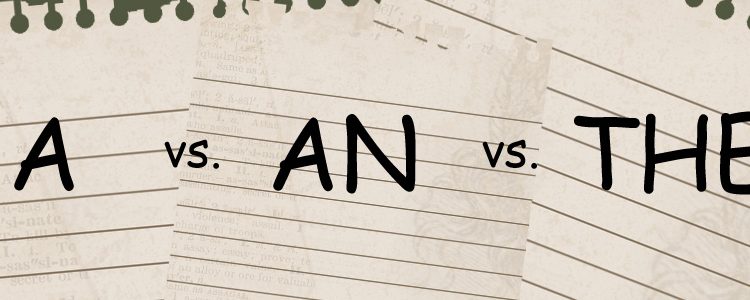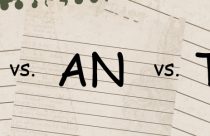A Vs. An Vs. The: Knowing When to Use the Right Article

According to linguists, the earlier forms of English did not have articles to accompany nouns as the necessary information concerning number and specificity were conveyed contextually or by other words that were placed somewhere else in the sentence. This system still exists in many languages of the world, such as Russian, Hindi, Chinese, and Japanese, but at some point other languages have evolved a set of words to precede nouns to indicate quantifiable information.
In English, the definite article “the” originated from the word “that,” which was one of the words that was used to specify the location of an object. English used to have three ways of indicating location: i) “this,” right here; ii) “that,” further off; and iii) “yon,” much further off. The word “that” eventually evolved into the definite article “the,” which indicates that a certain specific object is being referred to. The alternative is the indefinite article “a/an,” which does not specify any particular object, but indicates one of any number of possibilities (a/an was derived from the word “one,” and it can still have this meaning).
Related: Not quite comfortable with English language and grammar? Check out these useful resources now!
The distinction between using a vs. an can be subtle, e.g., if you are assembling a distillation apparatus and you need a condenser you might tell your assistant, “Bring me the condenser.” Because you used the definite article, this implies that want a certain specific condenser, perhaps the one he put in the drying oven a few hours earlier. However, if you say “Bring me a condenser,” this implies that there are more than one condensers available in the lab and that it does not matter which condenser is brought to you by him.
Compared with many other languages, the usage of articles in English is pretty simple. While the German language has twelve articles, English has only three articles, and there is no difference in meaning between a and an—“a” is used with a noun that begins with a consonant-like sound, whereas “an” is used with a noun that begins with a vowel-like sound. So, the sound of the first letter in a word is important, and not the actual letter with which the word begins, e.g., before the phrase “NMR spectrum,” the indefinite article “an” will be used as the abbreviation NMR is pronounced as “en-em-are.” So, article usage in English can be briefly explained as follows:
- There are a few instances where no is required—the so-called “zero article.”
- Plural nouns generally do not require articles—“Spectra are shown in the supplementary information.”
- Singular nouns of a general nature denoting something that is made up of many parts (“mass nouns”) are treated like plural nouns in this respect—“Chromatography is a good way to purify organic compounds.”
So, a native English speaker would say, “The chromatography is a good way to purify organic compounds.” However, if you asked someone why he omits the definite article here, he might have a hard time explaining it to you. Because plural and mass nouns refer to many objects, there is usually no need for definite or indefinite articles with them, and it would be confusing if articles were used.






Thank you! Finally, I’ve found THE simple explanation I can live with 🙂
Simple yet informative